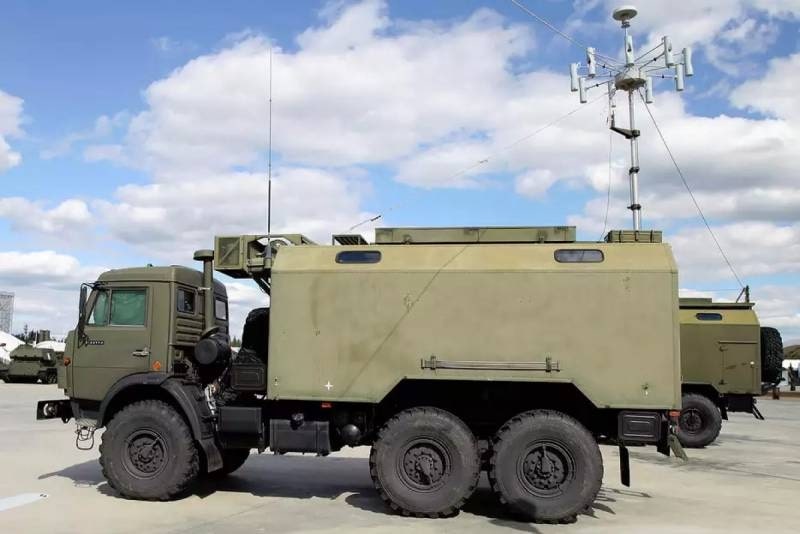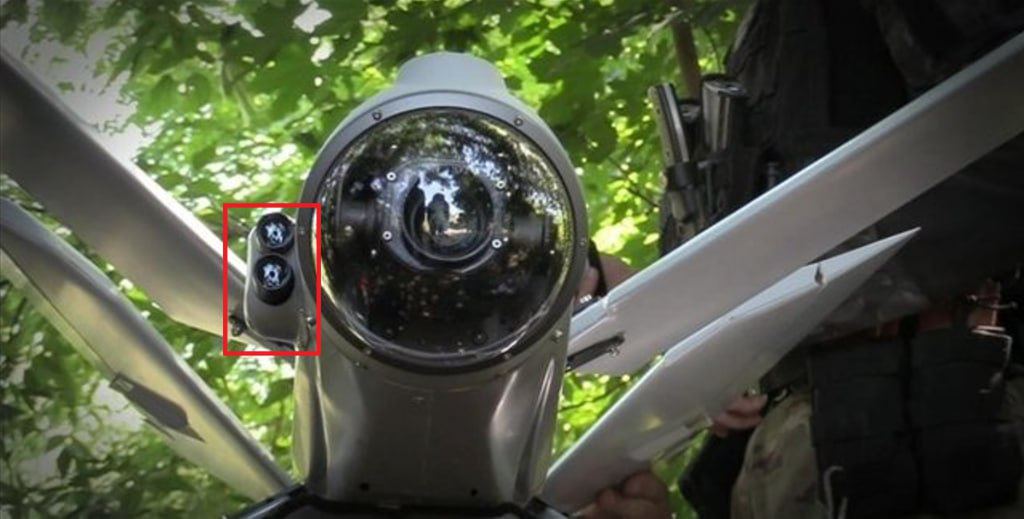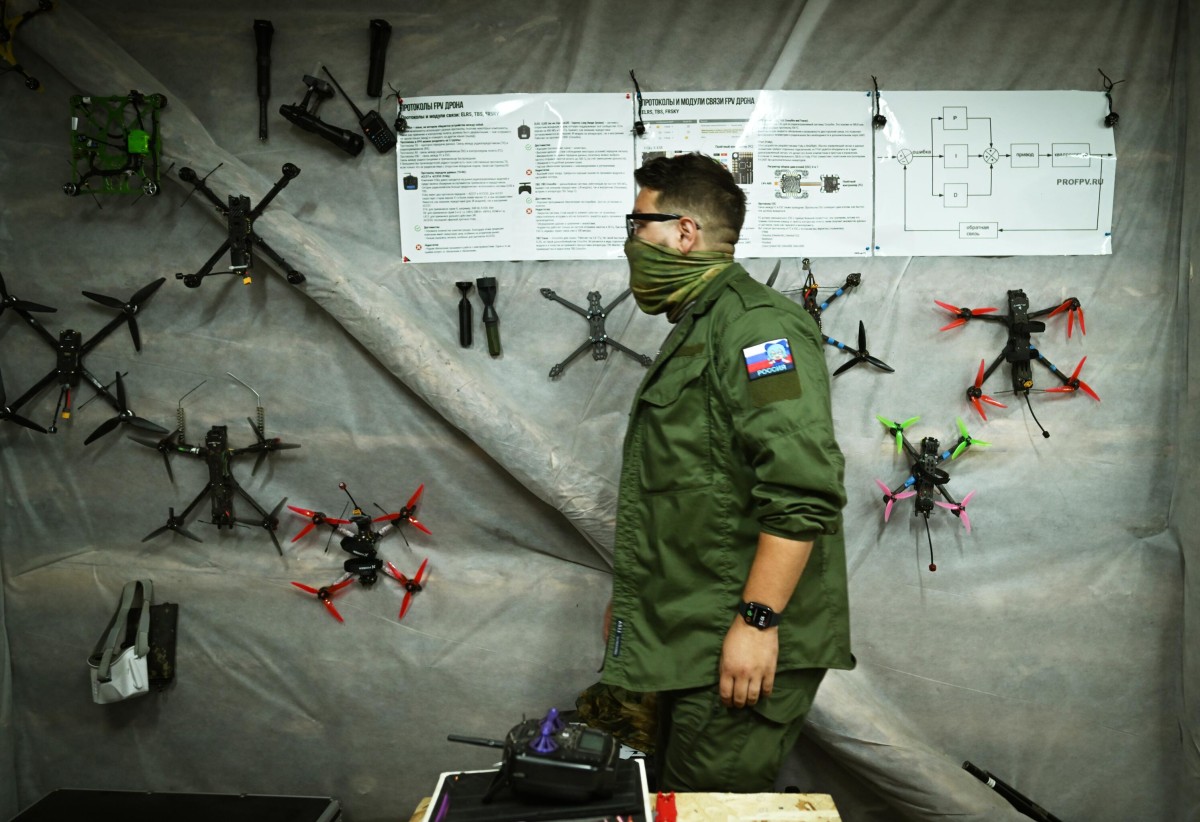Ukraine’s New A.I. Drones Look To Beat Russian EW Jamming; Top Minister Accepts Moscow’s Might

In a dynamically evolving techno-tactical contest, Russia and Ukraine have introduced newer systems to beat each other’s advantages in attack/kamikaze drones and electronic warfare (EW).
While the Armed Forces of Ukraine (AFU) now have drones with AI to beat Russia’s superior EW systems, Moscow has claimed to have developed an unmanned aerial vehicle (UAV) that is resistant to all types of EW jamming.
Drones have characterized the 26-month war, where cheap, mass-produced, commercial-use remotely piloted aircraft have been repurposed for military applications, ranging from simple aerial surveillance, reconnaissance, artillery fire correction, and attack roles by being strapped with explosives.
In Ukraine’s case, they have come to nearly substitute artillery owing to the destruction of its own Soviet-era guns, military factories, and the limited availability of Western howitzers and artillery rounds that were donated from their own stockpiles.
Russia, however, has been judged to have a lead in EW since the beginning of the war, as Western experts have repeatedly acknowledged.
Ukraine, on its part, has pioneered repurposing civilian drones for battlefield use, has a larger inventory with Western funding, and developed tactics that have shaped Russia’s own drone warfare and manufacturing strategy.

Ukrainian Drones Now Have A Mind Of Their Own?
According to TASS, the deputy head of Ukraine’s Ministry of Defense, Ekaterina Chernogorenko, said that the military plans to equip its drones with AI “due to widespread use of electronic warfare (EW) by the Russian army.”
“The biggest problem (for UAVs) is the last kilometer to the target, given that (military personnel of the Russian Armed Forces) have more and more individual electronic warfare equipment,” she was quoted.
The AI technology will “allegedly be able to direct the device to the target, even if its control channel has been suppressed.”
The description suggests autonomous drone technology with little to no human control. The UAV guides automatically along waypoints, identifies targets, and attacks them. Information about the location, topography, and target is fed into their system. The drone is also likely to have an Inertial Navigation System (INS).
This is achieved with either highly sophisticated algorithms that allow the drone to operate itself in some complicated tactical scenarios or AI that gives it the decision-making ability.
Either way, the absence of a radio-control link between the ground operator and the aircraft or satellite navigation signals does not give EW systems to identify the drones or anything to “jam” or “spoof.” EW aims to cut, sever, or disrupt these connections to make the drone veer out of control.
A recent report in Time magazine noted how Western technology companies have made Ukraine their “AI war lab,” testing and perfecting various technologies. Such efforts, including the procurement of hundreds and thousands of civilian drones for battlefield use with international and crowd-funding efforts, have been led by Ukraine’s Minister of Digital Transformation, Mykhailo Fedorov. It is likely the recent technology was developed with Western scientific collaboration.
This is similar to Russia’s Lancet kamikaze drones, which, in October last year, were found to be able to autonomously identify Western artillery systems and make their attack dives.
This has been assessed to be a form of image recognition technology, where shapes are identified and classified against pre-loaded pictures in the system’s internal databank.

Russia’s Frequency-Changing EW System
Russia, meanwhile, has further enhanced its anti-EW efforts, presumably in response to the flow of Western technology backing Ukraine.
According to TASS, officials from the Simbirsk Design Bureau, the developers of the Piranha UAV, reported the development of a “multi-band communication system that cannot be jammed by electronic warfare (EW), since it allows (changing) not only frequencies but frequency ranges.”
It can switch between “three frequency ranges directly in flight, depending on the needs of the UAV operator,” the official said. “Electronic warfare cannot interfere with the flight of our device. When (the enemy is jamming), the operator changes the frequency of the signal or immediately alters its range (while continuing) to perform the task.

Moreover, the development was carried out at non-standard frequencies, which gives an even greater advantage over the enemy.”
The description suggests that technical workarounds to the technology are possible but would be very tedious and time-consuming. It would take days to analyze various frequencies and spectrums and possible patterns in Piranha operations. By then, Russian troops will have ensured incremental tactical advances that would be hard to reverse.
- Questions and Answers
- Opinion
- Motivational and Inspiring Story
- Technology
- Live and Let live
- Focus
- Geopolitics
- Military-Arms/Equipment
- Ασφάλεια
- Economy
- Beasts of Nations
- Machine Tools-The “Mother Industry”
- Art
- Causes
- Crafts
- Dance
- Drinks
- Film/Movie
- Fitness
- Food
- Παιχνίδια
- Gardening
- Health
- Κεντρική Σελίδα
- Literature
- Music
- Networking
- άλλο
- Party
- Religion
- Shopping
- Sports
- Theater
- Health and Wellness
- News
- Culture

